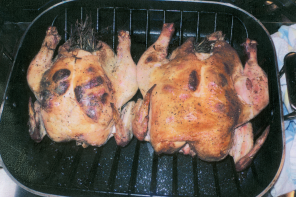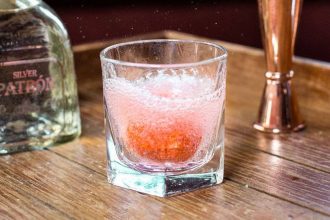Many American wine drinkers tend to break down the vast categories of wine into a simple dichotomy: red and white. Nowadays, however, we find ourselves flooded with various “colorful” bottles of vino available at our local wine shops. Orange wine? Yellow wine? Pink wine? What started as a simple decision between red and white has suddenly evolved into an entire color spectrum of options.
So, we’ve put together a quick cheat sheet for the full rainbow of wines available at your nearest wine-selling establishment, starting with the basics:
White Wine
White wine is produced by fermenting white (although sometimes, dark) skinned grapes. The grapes are first pressed to release their juices, avoiding contact with skins and seeds so as to maintain their light color. White wines can range in pigment from straw yellow to greenish-yellow to coppery gold. Popular white wine grapes are Chardonnay, Riesling, Sauvignon Blanc and Pinot Grigio, though thousands of different varietals are cultivated worldwide. These wines range from bone dry to syrupy sweet and are made in a variety of different processes. White wines cover a broad ratio of taste profiles as well, ranging from crisp and high in acidity, to rounded and fuller bodied. Due to the absence of skin/stem contact, white wines are a generally more refreshing option than their red counterparts.
Red Wine
Red wine is made from dark colored/black skinned grape varietals all over the world. The pigmentation of red wine can range from light brick colored (indicator of age) to opaque black-purple. Like white wine, red wine is produced by the alcoholic fermentation of grapes, however, the defining difference between white and red is the skin and seed contact that red wines experience during maceration. This skin contact extracts both color and flavor to the wine, also imparting tannin (the dryness you feel along the sides of your mouth) to the final product. Reservatrol (a natural compound containing health benefits) is also a byproduct of this skin/seed contact, which comes from the chemical compound found in stems and seeds, making that evening glass of red all the more justifiable.
Orange Wine
Contrary to popular belief, orange wine is indeed made from grapes and not from the orange fruit itself. A perfect hybrid of red and white wine making, orange wine is the byproduct of white wine grapes vinified in red grape fashion. That’s to say, where white wine grapes are usually immediately pressed off of the skins to avoid juice contact with seeds and stems, orange wine encourages this type of maceration. The pigment, phenols and tannins imparted onto the white grape juice from this skin contact produces a wine that is slightly orange in color, hence the name of this unique hybrid. Orange winemaking has a long history, dating back to thousands of years BC in Armenia and Georgia. Nowadays, the technique has seen a rise in popularity in northeastern Italy, Slovenia and Croatia.
Yellow Wine
Known as “Vin Jaune” in its native French, yellow wine is a unique type of white wine produced in the Jura region of France from late harvest Savagnin grapes. The grapes ferment slowly in small oak casks that are not entirely filled, allowing for the presence of air. The air inside of the casks permits the growth of a film of yeast called the “voile,” partially protecting the wine from oxidation. Like fino Sherry, Vin Jaune gets its taste profile from barrel maturation under this layer of yeast (called “flor” in Spain). The “voile” takes two to three years to develop, exposing the wine to small levels of oxidation during this time period. This gradual oxidation gives the wine its signature yellow color, as well as nutty, toasted flavors. After all is said and done, only about 62% of the original wine quantity is left in the barrel post evaporation/aging. Vin Jaune is to be consumed at cellar temperature (between 55 and 60 degrees Fahrenheit.) Pair it with the regional comté cheese and you’re in for a gastronomic whirlwind of contentment.
Green Wine
Better known as Vinho Verde, this “green wine” hails from the Minho province of northern Portugal. The “green” in this name does not correlate to the color of the wine, but rather the youth of it. Vinho Verdes are meant to be consumed young, while their vibrancy and acidity are still in full swing. Vinho Verde is not actually a grape varietal, but a specific Portuguese appellation, producing reds, whites and rosés. The wines generally have a slight effervescent sparkle, a byproduct of the winemaker popping the juice with a hit of artificial carbonation. The wines are light and refreshing, especially the whites, characterized by fresh citrus fruit flavors. While over 35 grapes are permitted in the production of Vinho Verde, the most popular varietals are Loureiro and Alvarinho for whites and Vinhão for red. These mouthwatering wines usually clock in on the lower side at 8-11% alcohol, so don’t feel too bad when you realize you single-handedly consumed that whole bottle poolside.
Pink Wine
If any wine has defined the last couple of summers in the USA, it’s been rosé. Americans are more crazed than ever for the refreshing pink juice, though what exactly is rosé wine? Rosés are essentially baby reds, experiencing shorter maceration periods than their red counterparts. Depending on which grape varietals are used and how long skin contact is, rosés can range in color from the palest of pink to the deepest of magentas. The three major ways to produce these wines are via skin contact, saignée or blending. The skin contact method keeps the skins and seeds in touch with the juice for one to three days before they are discarded for fermentation. Saignée, literally translating to “bleeding,” occurs when a portion of juice that is intended to become red wine is separated from the pack. Winemakers then remove the skins, seeds, and stems from this new portion so that it may grow up to be rosé, while the remainder continues down the road to mature into a full blown red. Blending, which is exactly what it sounds like, involves the mixing of red and white wine. Most wine appellations do not recognize this as a legitimate way to produce rosé, with the exception of Champagne. While most consumers cling to Provence for their beloved dose of pink, wine regions all over the world are starting to develop a market for rosé, such as Tuscany, the Loire Valley and Navarra.
Illustration by Chawaporn Kitimahasak









Please advise of the cardiac benefits of one glass of malbec red each evening. Thank you.